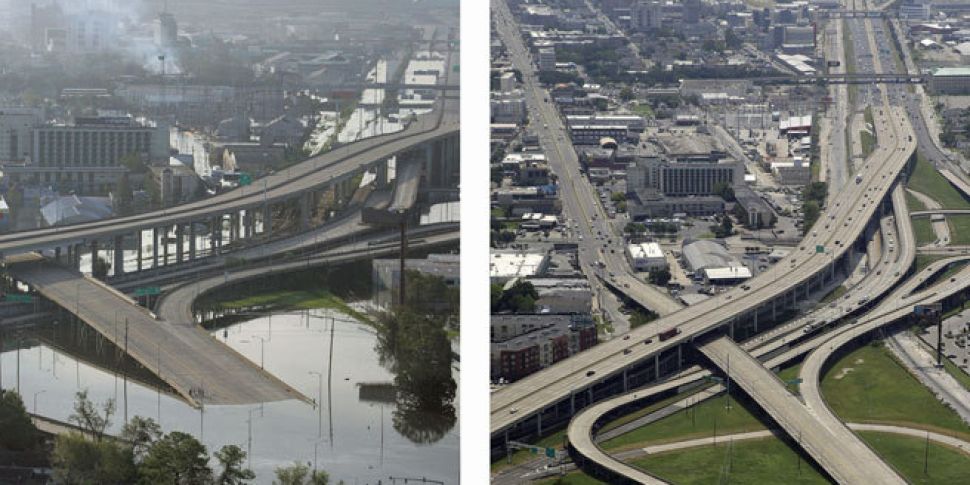The US official in charge of the emergency response to Hurricane Katrina has blamed former President George W Bush for leaving a power vacuum at the height of the crisis.
President Barack Obama will head to New Orleans later as the city prepares to mark the tenth anniversary of a disaster which killed 1,800 people.
The category 5 hurricane caused a storm surge which overwhelmed levees designed to protect the city. The hardest-hit areas were the poorest, mostly black neighbourhoods on land below sea level.
As the slow-motion catastrophe unfolded, many in the city felt abandoned and what began as a weather story became a national tragedy.
Questions remain to this day over how the richest nation on earth failed people in its own backyard.
Katrina has become a byword for government failure and the administrator of the Federal Emergency Management Agency (FEMA) at the time says President Bush, who famously first observed the disaster from the air, bears much of the responsibility.
Michael Brown said: "When the president made the flyover, I was in contact with Air Force One and said, 'I need the President to land'".
"His failure to do that at that moment - which is surprising because it is not in his character - created the worst question that anyone can have and not have an answer for in a disaster, and that is: Who is in charge?".
Mr Brown also defended FEMA's preparations for Katrina. "It was a massive response but people choose to ignore that," he said.
President Bush is also due to visit New Orleans this week.
Recovery was 'racist and classist'
Katrina was the costliest natural disaster in American history. It is estimated that 80% of the city was flooded.
While much of New Orleans has rebounded from Katrina, the hardest-hit areas remain scarred.
The Lower Ninth Ward, which saw every home destroyed, has seen only a third rebuilt. Many families who had lived there for generations have not returned.
Kimberly Roberts, whose videos of the disaster became an Oscar-nominated documentary, said the recovery has been uneven.
She said: "The recovery was racist, straight up, and classist. People who were black and brown suffered the most and are still suffering the most, those who have the resources, those came up the most".
Among the heroes of Katrina was John Keller, a former US Marine who saved hundreds of neighbours by herding them to the roof of his apartment building. His story will be made into a Hollywood movie next year.
"Jesus Christ is my hero," said Orlanda Martin, one of his neighbours. "But John Keller is my hero too because John Keller got us out of here".
Mr Keller said: "Like an old lady said, 'You're going to be blessed for what you did for us, baby'. I said, 'I'm not worried about that, I'm just trying to get everyone out of here'".
"I didn't want to see anybody else die in front of me, I saw enough of that in Iraq. I didn't want that on my head. If one person had died on me that would have haunted me".









